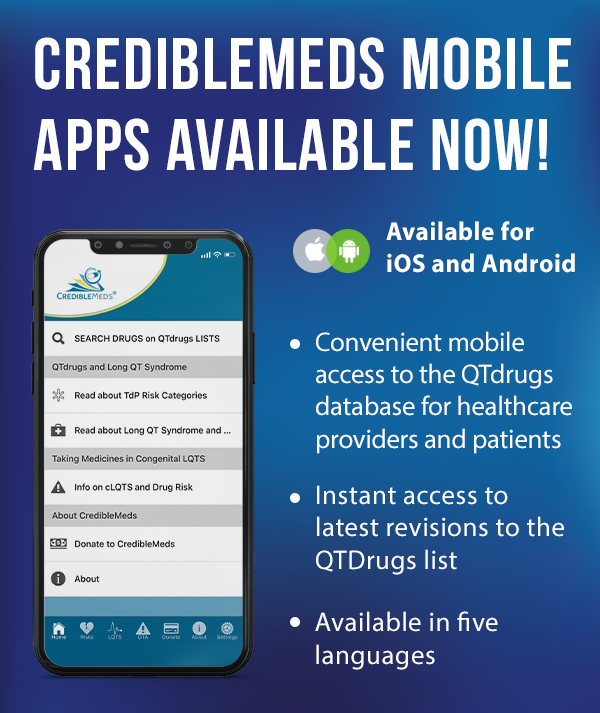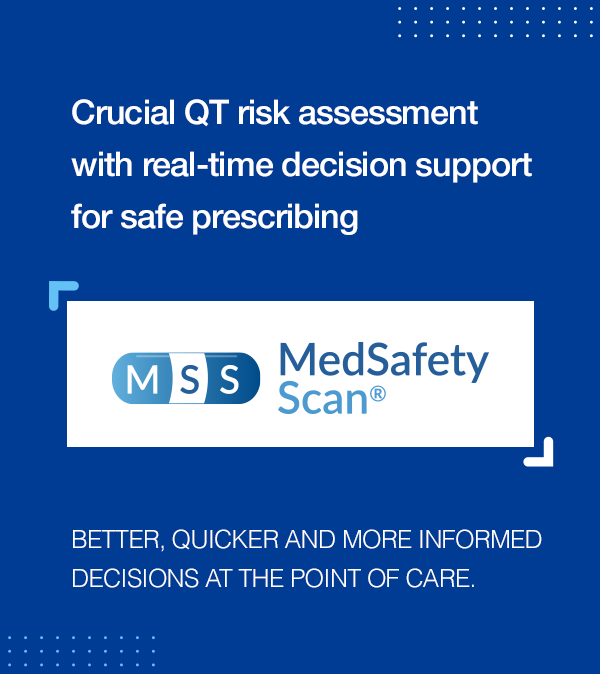Fluoxetine can have serious drug interactions
September 27, 2000
Fluoxetine (Prozac®, Eli Lilly) is a medication that has been used for more than 15 years as an antidepressant. It is also approved for use in obsessive compulsive disorder and bulimia nervosa. Fluoxetine is now also being marketed as a medication for the treatment of premenstrual dysphoric disorder (PMDD) (Sarafem®,Eli Lilly). In 1999 fluoxetine was among the most commonly dispensed medications in the United States and was the most commonly prescribed antidepressant.1 Since fluoxetine is so commonly used, it is necessary to understand its potential for interactions with other medications.
Drug-QTDrug interactions can be due to duplication of the pharmacologic effect (pharmacodynamic drug interactions). Since fluoxetine is a medication that increases the amount of serotonin that can act at receptors, pharmacodynamic interactions could occur if fluoxetine is given with other medications that also increase the levels of serotonin. These medications include sumatriptan (Imitrex®, GSK), tryptophan, and drugs known as MAO inhibitors, such as phenelzine (Nardil®, Parke-Davis), tranylcypromine (Parnate®, GSK), and selegiline (Eldepryl®, Somerset; and others). The interaction could result in a cluster of symptoms called the serotonin syndrome that can include restlessness, irritability, altered behavior, confusion, altered reflexes, shivering, fever and diarrhea, and result in seizures and coma. The use of fluoxetine with MAO inhibitors is contraindicated and fluoxetine use is contraindicated within 14 days of discontinuing MAO inhibitors. In addition, MAO inhibitors should not be used within at least 5 weeks of stopping fluoxetine, since fluoxetine is slowly eliminated from the body. Since St. John's wort could also potentially also increase the levels of serotonin, the possibility of an adverse interaction in combination with fluoxetine should be considered.
Drug interactions can also be due to an alteration in how drugs are eliminated by the body (pharmacokinetic drug interactions). Fluoxetine is metabolized by the enzyme CYP2D6. Approximately 7% of Caucasians are deficient in the expression of this enzyme - they are referred to as poor metabolizers. When a poor metabolizer takes several doses of fluoxetine it accumulates to higher than usual levels in the blood,2resulting in a larger exposure to fluoxetine than occurs in patients who have this enzyme. This could lead to adverse drug reactions including anorexia, nervousness, tremor, tachycardia, and seizures.
The enzyme CYP2D6 can also be inhibited by certain medications including amiodarone (a medication for cardiac arrhythmias), haloperidol (an antipsychotic medication), and quinidine (a medicine for heart arrhythmias. If a patient taking fluoxetine is also taking a medication that inhibits CYP2D6, fluoxetine can accumulate in the blood, in the same way that it does in a poor metabolizer, and lead to adverse drug reactions.
Fluoxetine is also a potent inhibitor of CYP2D6.3-5 This means that fluoxetine can inhibit the elimination, and cause accumulation, of other medications metabolized by CYP2D6. One such drug is codeine. In the case of the pain medication codeine, fluoxetine can prevent the body from converting the drug to its active form morphine and as a result patients prescribed codeine for pain may not experience any benefit if they are taking fluoxetine at the same time. Other drugs metabolized by CYP2D6 include amitriptyline, imipramine, and desipramine (drugs used to treat depression) and thioridazine (antipsychotic). Fluoxetine also inhibits enzymes known as CYP2C96and CYP2C19,3 and could interfere with the elimination of many medications including warfarin (an anticoagulant) and phenytoin (a seizure medication). An accumulation of any of these medications could result in serious and potentially life-threatening adverse drug reactions.
For a more complete reference to potential drug interactions with fluoxetine that are due to pharmacokinetics, please refer to www.drug-interactions.com. Patients, physicians, and pharmacists should carefully review the list of medications a patient is receiving, including prescription and nonprescription drugs, herbals, and dietary supplements, and evaluate the potential for drug interactions. Because fluoxetine is slowly eliminated from the body, the potential for drug interactions is still present for several weeks after stopping fluoxetine. Recognition and prevention of fluoxetine-associated drug interactions can improve patient safety and reduce preventable medication errors.

- Latner AW. The Top 200 Drugs of 1999. The More Things Change, the More They Stay the Same. Pharmacy Times 2000.
- Hamelin BA, Turgeon J, Vallee F, Belanger PM, Paquet F, LeBel M. The disposition of fluoxetine but not sertraline is altered in poor metabolizers of debrisoquin. Clin Pharmacol Ther 1996; 60(5):512-521.
- Jeppesen U, Gram LF, Vistisen K, Loft s, Poulsen HE, Brosen K. Dose-dependent inhibition of CYP1A2, CYP2C19 and CYP2D6 by citalopram, fluoxetine, fluvoxamine and paroxetine. Eur J Clin Pharmacol 1996; 51(1):73-78
- Alfaro CL, Lam YW, Simpson J, Ereshefsky L. CYP2D6 inhibition by fluoxetine, paroxetine, sertraline, and venlafaxine in a crossover study: intraindividual variability and plasma concentration correlations. J Clin Pharmacol 2000; 40(1):58-66.
- Alfaro CL, Lam YW, Simpson J, Ereshefsky L. CYP2D6 status of extensive metabolizers after multiple-dose fluoxetine, fluvoxamine, paroxetine, or sertraline. J Clin Psychopharmacol 1999; 19(2):155-163.
- Schmider J, Greenblatt DJ, von Moltke LL, Karsov D, Shader RI. Inhibition of CYP2C9 by selective serotonin reuptake inhibitors in vitro: studies of phenytoin p-hydroxylation. Br J Clin Pharmacol 1997; 44(5):495-498.
Return to Drug Interaction Information Index.












